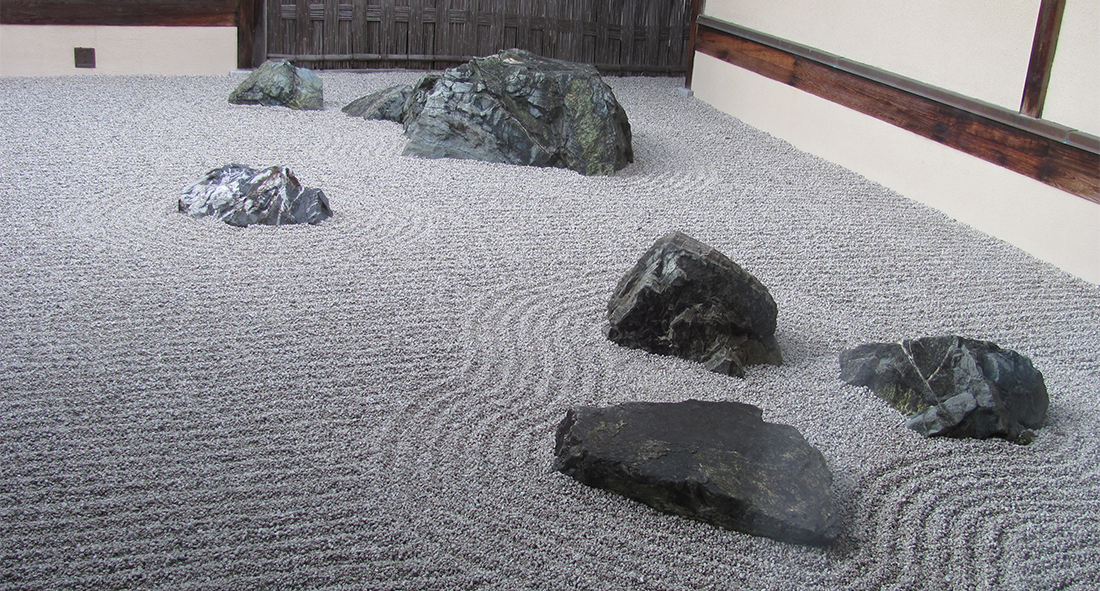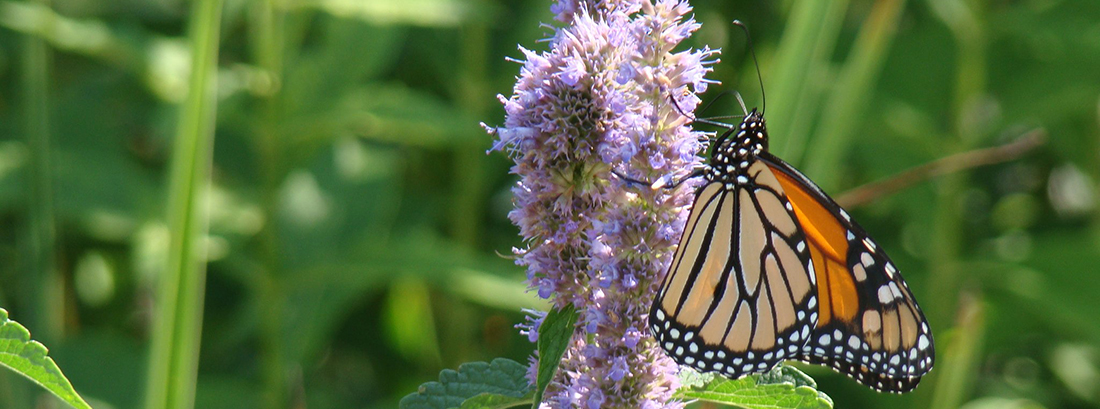
Find a sacred centre in your own backyard
By Rebecca Last | Jan/Feb 2019
Gardening is always about more than planting and harvesting. Beyond the dirt, bugs and weeds, even the most practical among us can’t help but feel a sacred connection when viewing a beautiful garden. For me, this sense of connection may come from memories, from the sense of timelessness a beautiful garden evokes or from the way a garden connects me to the natural world. More fundamentally, perhaps gardens represent a kind of spiritual archetype. Indeed, garden imagery is integral to all major religions.
The best place to find God is in a garden. You can dig for him there.
GEORGE BERNARD SHAW
From the Zen garden to the Paradise Garden, garden design throughout history has been influenced by the sacred. At its simplest, Zen garden design captures the essence of nature to support the peaceful contemplation required for meditation. The raked gravel symbolizes variously purity, water and space or distance, while the emerging rocks represent a distant mountain landscape, also designed to promote quiet contemplation and a peaceful state of mind.
Where the Zen garden minimizes distractions, the Paradise Garden engages all the senses. The classic Paradise Garden design features an enclosed space, most commonly a rectangle that keeps the wildness of nature at bay and symbolizes the Garden of Eden, now closed off from humanity. Four quadrants of beds featuring fragrant plants and herbs may be quartered by canals, rills or elongated ponds, or more simply have a single fountain at their centre.
This design captures the description in Genesis of a central spring that feeds four rivers flowing from the Garden of Eden to the world beyond. The garden is filled with fragrant plants and the sound of splashing water to overwhelm visitors’ senses. The Paradise Garden concept has been widely influential for centuries, from the strongly geometric arrangements of watercourses and pathways at the Taj Mahal to the more baroque and symbolic plantings at Versailles, with many monastery gardens in-between.
Regardless of their design, gardens evoke a physiological response in us resulting in reduced heart rate, lower levels of stress hormones and an overall sense of well-being. Sometimes all it takes for me is a single smell — a whiff of new-mown grass or the perfume of lilacs — to bring back long- dormant memories.
Scents bring memories, and many memories bring nostalgic pleasure. We would be wise to plan for this when we plant a garden.
THALASSA CRUSO, TO EVERYTHING THERE IS A SEASON, 1973.

I inherited bad eye-sight from my mother and have always been conscious that my vision may not last as long as I do. Consequently, I designed my garden to include many fragrant plants and I enjoy offering visitors what I call a Smell Tour. Of course, this includes fragrant flowers,but herbs and foliage are the stars of the show. Scent from crushing the fuzzy leaves of big root geranium (Geranium macrorrhizum) always reminds me of a Chanel perfume that was my favourite as a young woman. Most visitors have no difficulty identifying lavender and mint, but lemon balm, which makes me think of lemon-favoured Lifesaver candies, is trickier. As for my favourite herb, Anise hyssop (Agastache foeniculum), the strong scent of black licorice emitted by its leaves comes as a bit of shock to many visitors.
Beyond mere fragrance, certain plants may hold a special place in our hearts. Peonies, which can thrive for decades with little to no care,are a model memory plant. I have a lovely fragrant cream-coloured double peony that once graced our family’s home garden. Growing near it are some classic tall purple bearded irises. Although I have many fancier iris cultivars, these classics will always have a home in my garden because they were one of my mother’s favorites. Even annuals can be effective memory plants.The Alzheimer Society of Canada has adopted the aptly named forget-me-not (Myosotis spp.) as its floral emblem.When my mother passed away, visitors to her wake received a gift of seeds from the morning glories (Ipomoea spp.) she planted in my garden. How she would enjoy those cerulean blue flowers popping up in gardens all over Ottawa and beyond!
Forget-me-nots and morning glories are two examples of annual flowers whose prolific self- seeding make them more or less perennial. They are also examples of how gardens play with our sense of time. When we first moved to our home over a quarter century ago, Mum gave me seeds for both annuals. Thanks to their procreative proclivities, both species have endured, returning year after year, with virtually no effort on my part. In contrast, I have now lived with this garden long enough to see the first sapling we planted, a European birch, mature and die. Meanwhile, an acorn planted by squirrels about the turn of the millennia has grown into a graceful young oak that is now as tall as our house.
Gardeners always live with an oddly telescoping sense of time. Whenever we plant a seedling, we must consider its mature size. Every spring we plan for and anticipate the bounty of the coming harvest. Every fall, we look back on the past growing season and regret bad weather or our failure to weed enough. A visitor’s compliments are often met by some variation of the gardener’s constant complaint, “Too bad you didn’t see it last week before that dreadful storm!” or perhaps, “Just wait until next week when the clematis comes into bloom!” Fortunately, there’s always next year.
Gardening imparts an organic perspective on the passage of time.
WILLIAM COWPER
As much as gardens play with our sense of time, there is something eternal in the way they connect us to nature. Every visit to the garden results in new finds, in the sense of the seasons unfolding. From the moment I started gardening seriously, I also became aware of and interested in its many inhabitants and visitors. I started watching the visiting birds and bought a book to help me identify them. After learning that the big juicy green, black and yellow spotted caterpillars I’d been squashing were the larvae of black swallowtail butterflies, I suffered a crisis of conscience and resolved to be more respectful of the bugs in my garden. After all, most of them are benign, if not actually helpful.
Whether you find solace for your spirit, stimulation for your senses, lose track of time, or simply admire a visiting bird, your garden has much to offer. However you find inspiration in your garden, the important thing is to take the time to enjoy it, and to find your sacred centre in your own backyard.
Rebecca Last has been gardening on and off since age eight and has been a member of Master Gardeners of Ottawa-Carleton since 2005. Her small suburban garden is certified by the Canadian Wildlife Federation as wildlife habitat. Rebecca’s gardening addiction is enabled by her loving husband Richard and a collection of very spoiled rescue cats.






